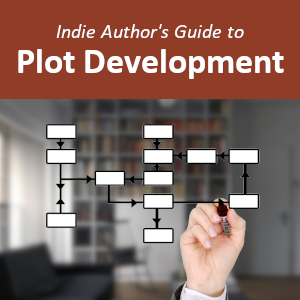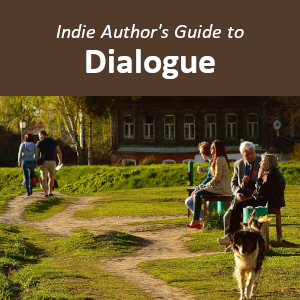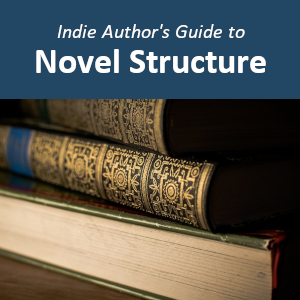It is important for authors to give a great deal of attention to their book’s plots and subplots, as these are necessary factors in developing a compelling narrative. While some authors prefer to have a general idea of their plotline and develop it as they write, many others meticulously plan out every detail of their story before ever putting pen to paper. If you need assistance in developing the plot of your novel or if you want to enhance the plotlines in your book, you will surely find the following lists and suggestions very helpful. In addition to offering descriptions of the most popular plot types, this guide will help you use character conflicts, narrative arcs, and outlines to add depth to your book’s plot and subplots. Including thorough and gripping storylines to your novel will make it one that you are not only proud of, but also one that your readers will eagerly devour.
Conflict Types
While plots can take a variety of forms across many different genres and settings, one thing they all have in common is conflict. Conflict refers to the challenges and struggles that your characters face. While many characters may face clashes throughout the course of your story, the primary conflict faced by your protagonist will likely be the central plotline for your story. Additionally, many books feature multiple layers of conflict for main characters by including multiple conflict types. Here are the most common types of conflicts your characters may face.
| CONFLICT TYPE | DESCRIPTION | EXAMPLES |
|---|---|---|
| Character vs. Character | Character vs. Character can be seen when two characters oppose one another, such as a protagonist and an antagonist; this is one of the most common types of conflict in literature. | Harry Potter and the Order of the Phoenix (Harry Potter clashes with Dolores Umbridge) |
| Character vs. Nature | Character vs. Nature is seen when your character battles against harsh landscapes, natural disasters, or wild animals. | Moby Dick (Ishmael struggles against the weather, the ocean, and a savage whale) |
| Character vs. Self | Character vs. Self occurs when the character’s primary struggle is with a moral dilemma or self-doubts. | The Call of the Wild (Buck fights to suppress his primitive instincts) |
| Character vs. Society | Character vs. Society can take the form of rebelling against any type of authoritative organization, such as a corrupt corporation or an oppressive government. | Mockingjay (Katniss Everdeen fights in a rebellion against the tyrannical Capitol) |
| Character vs. Supernatural | Character vs. Supernatural involves a conflict against an unexplained being or force, such as gods, ghosts, demons, or aliens. | The Shining (Jack contends with ghosts and paranormal visions at the Overlook Hotel) |
| Character vs. Technology | Character vs. Technology pits your character against androids, machines, or other forms of technology. | 2001: A Space Odyssey (Dr. Bowman battles the artificial intelligence that is sustaining his spaceship) |

Plot Development
Have you ever felt like the plots in most of the books you read seem formulaic? Well, that’s because many of them actually do follow a formula. Whether intentionally or not, most authors follow certain conventional literary structures to develop their plot. Doing so provides readers with an experience that they will likely find both appealing and familiar. Regardless of whether or not you utilize a defined plot development structure for your book, it is important that you give a great deal of attention to your story’s plot. The plot of your book is the sequence of events that your characters will experience, and as an author, you are able to use your plot development to determine what, and when, events are shared with the reader. The development of your plot gives you the opportunity to build suspense and evoke emotions in readers as they follow your characters interacting with each other and experiencing the events that occur within your storyline. Although the exact names and definitions of some of the structures may vary from one source to another, here are some of the most common plot development structures.
| STRUCTURE | DESCRIPTION | EXAMPLES* |
|---|---|---|
| The Hero’s Journey / Monomyth | In The Hero’s Journey, the main character goes through the following progressive set of stages. 1-Ordinary World: Protagonist begins as a relatable character living in everyday circumstances 2-Call to Adventure: Protagonist is given a problem or challenge they must solve 3-Refusal of the Call: Protagonist hesitates to take on the challenge 4-Meeting the Mentor: Someone gives protagonist what they need to accept challenge 5-Crossing the Threshold: Protagonist commits to their journey 6-Tests, Allies, Enemies: Protagonist faces obstacles and finds friends to help him 7-Approaching the Inmost Cave: Protagonist decides to tackle their challenge despite knowing the dangers that will come in completing their journey 8-The Crisis/Supreme Ordeal: Protagonist faces a great test, sometimes internally 9-Seizing the Reward: Protagonist survives their test and benefits from the experience 10-The Road Back: Protagonist believes their journey to be complete, allowing them to return successful 11-The Climax/Resurrection: Protagonist faces their greatest enemy or challenge and overcomes it 12-Return with the Elixir: Protagonist returns home a better person for having gone on their journey and having faced their challenges | Harry Potter and the Philosopher’s Stone: 1. Ordinary World: Harry lives with his extended family, unaware of magic 2-Call to Adventure: Letters arrive, inviting Harry to learn wizardry at a magic school 3-Refusal of the Call: Harry’s family tries to keep the letters from him 4-Meeting the Mentor: Hagrid tells Harry he is a wizard and introduces him to magic 5-Crossing the Threshold: Harry experiences the magic world at Diagon Alley and at Hogwarts 6-Tests, Allies, Enemies: Harry faces tests like a giant troll and sabotage during Quidditch, gains allies in Ron and Hermione, and finds enemies in Snape and Malfoy 7-Approaching the Inmost Cave: Harry decides to enter the trapdoor to protect the stone 8-The Crisis/Supreme Ordeal: Harry faces dangerous obstacles beneath the trapdoor 9-Seizing the Reward: Harry obtains the stone, realizing his true capabilities 10-The Road Back: Harry attempts to leave with the stone to prevent Quirrell from getting it 11-The Climax/Resurrection: Qurirrell and Voldemort confront Harry and try to kill him but Harry survives 12-Return with the Elixir: Harry returns to his family more capable than he was before |
| Three Act | The Three Act structure is comprised of three sections: 1-The Setup reveals the protagonist in their everyday life and the conflict that changes their situation 2-The Confrontation is a series of tests that the protagonist must face and overcome 3-The Resolution is the buildup to the climax of the story, followed by the protagonist facing their greatest test and overcoming it | The Hunger Games: 1-The Setup: In chapters 1-9, Katniss lives in poverty, becomes a tribute in a game where only one person survives, and with no other choice, she begins training for the game 2-The Confrontation: In chapters 10-18, Katniss has conflicts with Peeta, and then faces severe trials from other tributes trying to kill her 3-The Resolution: In chapters 19-27, Katniss learns that she and Peeta can both win, and she confronts the remaining tributes and ultimately the game makers before she and Peeta survive and exit the game together |
| Freytag’s Pyramid | Freytag’s Pyramid is a plot structure based on the rising and then falling tension of the story: 1-Exposition introduces the protagonist and other characters 2-Rise introduces the inciting conflict and protagonist’s struggles with it 3-Climax reflects a turning point for the protagonist 4-Return or Fall details either the successes or decline of the protagonist 5-Catastrophe or Resolution features the primary conflict for the protagonist and their ultimate triumph or failure | The Hunger Games: 1-Exposition: Katniss is introduced, and we learn aspects of her abilities and personality as we meet some of the other characters 2-Rise: Katniss becomes a tribute and has to face off against other tributes in the games 3-Climax: A rule change allows Katniss to survive with Peeta and her goal changes to winning the games with him 4-Return or Fall: Katniss finds Peeta, saves his life, and together they become the final two tributes 5-Catastrophe or Resolution: A retraction of the rule change causes Katniss to challenge the game makers, and she succeeds in winning the games alongside Peeta |
| Eight Sequence Method | The Eight Sequence Method advances the story through eight sections: 1-Setup and Challenge shows the protagonist in their status quo and introduces an inciting incident that will affect their normalcy 2-Responding to the Challenge leads protagonist into a course where they will overcome their challenge or achieve their goal 3-First Obstacle finds the protagonist facing a small hurdle 4-First Culmination finds the protagonist facing an even greater hurdle 5-Rising Action highlights a strong subplot that the protagonist deals with 6-Main Culmination features the greatest challenge the protagonist will face, resulting in the highest or lowest point in their journey 7-The Climax and Twist is where the protagonist thinks he has achieved his goal before an unexpected event leads to a final obstacle 8-Resolution finds the protagonist returning from their challenge changed in some way | The Hunger Games: 1-Setup and Challenge: Katniss goes from living a typical life in her district to becoming a tribute in a game of kill or be killed 2-Responding to the Challenge: Katniss trains at the Capitol 3-First Obstacle: During a private session, Katniss provokes the Capitol, and soon thereafter Peeta stops training with her 4-First Culmination: After the games begin, Katniss is targeted by other tributes 5-Rising Action: Katniss and Peeta learn that they can both win, and she saves him from severe infection 6-Main Culmination: Katniss and Peeta become the final two survivors of the games 7-The Climax and Twist: The gamemakers announce that there can actually only be one winner, but Katniss cunningly leads them to change their minds so that she and Peeta are both allowed to become winners 8-Resolution: During a final interview, Katniss shows greater awareness of how to not provoke the Capitol |
| Save the Cat | Save the Cat structure details fifteen beats that define a story: 1-Opening Image shows the normal life of the protagonist 2-Theme Stated introduces the central theme of the story 3-Set Up connects the protagonist with their goal 4-Catalyst urges the protagonist in a direction to achieve their goal 5-Debate finds the protagonist hesitant about their journey 6-Break Into Two is where the protagonist accepts their challenge and begins a pursuit of their goal 7-B Story features a subplot, including characters that will affect the protagonist’s journey 8-Fun and Games has the protagonist facing obstacles along their journey 9-Midpoint is where the stakes are raised for the protagonist 10-Bad Guys Close In shows the protagonist realizing a major obstacle in their path 11-All is Lost is where the protagonist learns how daunting the rest of their journey will be 12-Dark Night of the Soul has the protagonist finding their goal overwhelming or impossible 13-Break Into Three finds the protagonist realizing a truth that has otherwise evaded them 14-Finale puts this new information into action as the protagonist faces their greatest challenge or enemy 15-Final Image shows the protagonist transformed by their journey | Harry Potter and the Philosopher’s Stone: 1-Opening Image: Harry and the Dursley’s live a relatively normal life 2-Theme Stated: Vernon Dursley denies that Harry could actually be a wizard 3-Set Up: Letters arrive for Harry, inviting him to Hogwarts 4-Catalyst: Hagrid arrives and tells Harry he is a wizard 5-Debate: Harry is taken to Diagon Alley and anxiously prepares for Hogwarts 6-Break Into Two: Upon finding the Hogwarts Express, Harry crosses the threshold from normal life to wizard life 7-B Story: On the train, Harry finds friends in Ron and Hermione, and rivals in Draco, Crabbe and Goyle 8-Fun and Games: Harry joins Gryffindor and the quidditch team, and faces challenges at Hogwarts 9-Midpoint: Harry finds out that a three-headed dog is guarding the stone at Hogwarts 10-Bad Guys Close In: Harry realizes that someone with bad intentions is getting close to finding the stone 11-All is Lost: Harry learns that Hagrid gave someone the knowledge they need to get past the three-headed guard dog 12-Dark Night of the Soul: Harry tries to tell Dumbledore about his concerns, but Dumbledore is not at Hogwarts 13-Break Into Three: Harry realizes that he will have to protect the stone 14-Finale: Harry overcomes the obstacles to get to the stone and then faces an ultimate battle against Quirrell and Voldemort 15-Final Image: Harry returns to the Dursley house, changed by his experiences |

Narrative Arc
Your book’s primary plotline is going to take readers on a journey, and this journey will no doubt have its ups and downs. This fluctuation between high points and low points is determined by your narrative arc, also called an emotional arc or story arc. This narrative arc differs from character arc in that it represents the changes in your character’s physical, mental or emotional status or situation, as opposed to the growth or development of your character. While every story will have its own unique flow of rises and falls, studies have found that nearly all narrative arcs follow one of the following types.
| TYPE | DESCRIPTION | FLOW | EXAMPLES* |
|---|---|---|---|
| Rags to Riches | An overall rise in the protagonist’s status or situation. | / | The Selection: / America leaves her life of poverty to go to the palace where she wins the heart of the prince |
| Riches to Rags | An overall decline in the protagonist’s status or situation. | \ | Catching Fire: \ Katniss is forced into a game of kill or be killed, learning afterward that her home District has been destroyed |
| Icarus Arc | The protagonist’s status or situation increases before falling. | / \ | Mockingjay: / Katniss makes strides in a rebellion against the Capitol \ She loses her sister and her faith in the rebellion |
| Man in a Hole | The protagonist’s status or situation declines before rising. | \ / | The Hunger Games: \ Katniss becomes a tribute in a game of kill or be killed / She wins the game and manages to also save Peeta |
| Cinderella | A rise, then fall, then rise in the protagonist’s status or situation. | / \ / | Harry Potter and the Philosopher’s Stone: / Outcast Harry makes friends and develops a sense of belonging at Hogwarts \ He faces bullies and follows a path that leads to him battling Quirrell and Voldemort / He survives the battle against Quirrell and Voldemort, and he, along with his friends, win the House Cup |
| Oedipus Arc | A fall, then rise, then fall in the protagonist’s status or situation. | \ / \ | Moby Dick: \ Ishmael gets a job on a whaling vessel and finds himself working for an obsessive captain that seeks revenge on a whale named Moby Dick / The ship’s crew makes progress in their search for the whale, eventually finding it \ The whale sinks the ship, killing nearly everyone aboard |
| Double Man in a Hole | A fall, then rise, then fall, then rise in the protagonist’s status or situation. | \ / \ / | Harry Potter and the Prisoner of Azkaban: \ Harry is attacked by dementors, can’t go on school outings, learns of Buckbeak’s impending execution, and hears that fugitive Sirius Black is trying to hurt him / He finds a way to go on school outings and discovers that Black is actually an ally \ He is attacked by dementors and his ally Black is captured / He is rescued from the dementors and saves Buckbeak and Black |

Story Tropes
A story trope can be defined as a commonly seen literary theme or plot. To some, tropes are looked down upon because, when they are overused, they lead to storylines that are formulaic, predictable and clichéd. Nonetheless, popular story tropes are found in many of the most successful books, since many readers find them to be comfortable and familiar. As an author, story tropes can be useful in developing the primary plotline and perhaps especially the subplots of your story. If you are looking for inspiration in creating a plotline, you may find the following list of the most popular story tropes useful.
| STORY TROPE | DESCRIPTION | EXAMPLES* |
|---|---|---|
| Avenging a Wrong | A character has been mistreated and seeks revenge. | Mockingjay: Near the end of the book, Katniss realizes that President Coin had a hand in Prim’s death, and she puts herself in a position to assassinate Coin. |
| Average Person becomes Elite | Whether it is surrounding money, fame, beauty, or any other thing of value, a character rises from a lesser status to a superior one. | The Harry Potter series: Harry goes from being a looked-down-upon orphan to one of the most famous and powerful wizards. |
| Enemies to Lovers | Two characters that are at odds with each other end up falling in love. | Pride and Prejudice: Elizabeth and Mr. Darcy at first find each other contemptible, but eventually fall in love. |
| Fake Relationship | Two characters pretend to be in a relationship, often realizing that they actually have feelings for one another. | The Hunger Games series: Katniss pretends to be in love with Peeta in order to gain sponsors and again at President Snow’s request, and eventually they marry. |
| Friends to Lovers | Two characters that begin as long-time friends realize they are romantically compatible. | The Harry Potter series: Although they bicker at times, it is clear that Ron and Hermione had been friends for a long time before eventually dating. |
| Fish out of Water | A character gets put in a situation that they are entirely unfamiliar and uncomfortable with. | The Hunger Games: Peeta Mellark, who is merely a baking apprentice, finds himself in a situation where he must hunt and kill people. |
| Forbidden Love | Two characters are in love, but due to circumstances outside of their control, are unable to be together. | Matched: Cassia develops feelings for Ky despite that The Society has matched her with someone else and prohibits her from having a relationship with Ky. |
| Hidden Among Us | Aliens or other unexpected beings are living among humans, hidden in plain sight. | Twilight: Vampires and werewolves are living undiscovered alongside humans. |
| Lost and Stranded | A character finds that they are alone and abandoned and they must find their way back to civilization. | The Maze Runner: Thomas and a group of teens are stuck in a maze-like prison that they must escape. |
| Love Triangle | Two people are in love with the same character. | Twilight: Both Edward and Jacob are in love with Bella. |
| On the Run | Whether for law enforcement or revenge, someone is tracking down a character for things they have done or are believed to have done. | Harry Potter and the Prisoner of Azkaban: The Ministry of Magic uses dementors and other means to find and apprehend Sirius Black, who eludes them repeatedly. |
| The One You Least Expect | Evidence points to other characters as being an offender, but it turns out instead to be someone unexpected. | Harry Potter and the Prisoner of Azkaban: Though Harry spends most of the book fearing an encounter with Sirius Black, it turns out that the real threat comes from Ron’s pet rat, Scabbers. |
| Quest for the Prize | A character or group of characters seek something that they value and have to overcome obstacles to reach it. | Harry Potter and the Deathly Hallows: Harry seeks to find the four remaining horcruxes and the three objects known as the deathly hallows in order to defeat Voldemort. |
| Race Against the Clock | A character only has a limited time to complete a certain action before something bad occurs. | Harry Potter and the Prisoner of Azkaban: Near the end of the book, Harry and Hermione only have a limited amount of time to complete a daunting series of tasks in order to save Sirius Black before dementors take his soul. |
| Returning Home | After a period of time away, a character must return to their hometown and confront elements from their past. | Twilight: Bella returns to Forks, Washington, where she must reacquaint with her father and with childhood friends like Jacob. |
| Stuck Together | Two characters, often at odds with each other, must work together. | Catching Fire: Despite having different feelings for each other, Katniss and Peeta must publicly portray a romantic relationship in order to protect their lives. |

Narrative Outlines
Many authors choose to create an outline of their novel before they begin the writing process. An outline can be useful in helping you to maintain your book’s pacing and direction. However, it should be noted that not all authors prefer to outline their work ahead of time. Although many successful authors such as J.K. Rowling and Suzanne Collins are known for meticulous outlining of their stories, Stephen King stated his opinion that, “Outlines are the last resource of bad fiction writers.” This viewpoint no doubt stems from an outline’s tendency to limit the organic creativity of a story. Some outline types are more broad than others, and some leave more freedom for creative input during the writing process. Every author is different and every story is unique, so if you decide to outline your novel, you will want to choose the type that will work best for you and your story.
| OUTLINE TYPE | DESCRIPTION |
|---|---|
| Skeleton Outline | Skeleton outlines are the least detailed of your outline options. A skeleton outline is written as a list that cites only major plot points, leaving all else up to the creative process. |
| Beat Sheet | A beat sheet is a list of all of your novel’s primary shifts, sometimes denoted via bullet points. These shifts may be notable changes in your characters and their relationships, fluctuations in the book’s tone, or the movement from one major plot point to another. |
| Synopsis | A synopsis is a thorough summary of your novel, including major plot points and character arcs. It will generally be only a couple of pages long, and will leave room for some auxiliary content to be determined during the writing process. |
| Scenes and Sequences Outline | Scenes and sequences outlines are most useful in a plot-based novel. For these outlines, you write out the progression of your plot and subplot, leaving out most details of character relationships. |
| Character Outline | Character outlines are particularly useful for character-driven novels. For a character outline, write down all the developments in your characters, leaving out most references to the plot. |
| Mind Map | Mind mapping involves depicting the connections among characters and the connections between plot points. Rather than a written outline, a mind map will look more like a flowchart or family tree. This type of outline is particularly useful in writing novels that have a large cast or a complex plot. |
| Snowflake Method | The Snowflake Method is a six-step process for developing your plot: 1-Write a one-sentence summary of your story, 2-Expand your single-sentence summary into a single paragraph that includes major plot points, 3-Add characters, including their motivations, goals and character arcs, 4-Expand your single-paragraph summary into a full page, writing a full paragraph for each major plot point, 5-Write a full page for each major character and a paragraph for each minor character, detailing how each of them fits into the plot and added information about their personalities and character arcs, 6-Complete a scene list, describing every scene in your novel. |

Clearly, having a well-conceived plot is an essential component to writing an engaging story that will engross readers. And a story’s main plotline is only the beginning. Incorporating subplots that weave their way in and out of the primary storyline give a book depth and complexity. A little effort in developing your book’s dramatic structure goes a long way in turning new readers into devoted fans. Therefore, as you begin preparing to write your next story or novel, be sure to give adequate attention to your book’s plot.
* Many of our examples are from the Harry Potter series and the Hunger Games series, as these are some of the most popular novels of our current century and characters from these books are likely familiar to most authors.
YOU MIGHT ALSO LIKE








